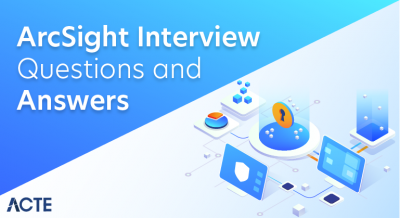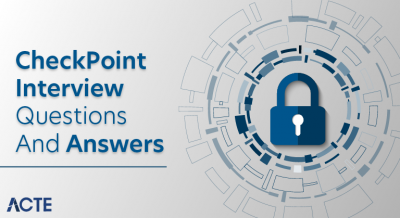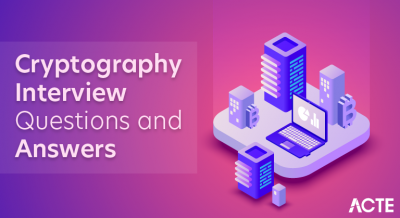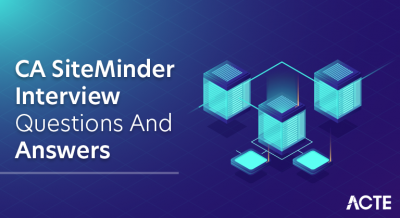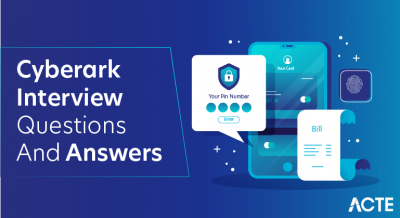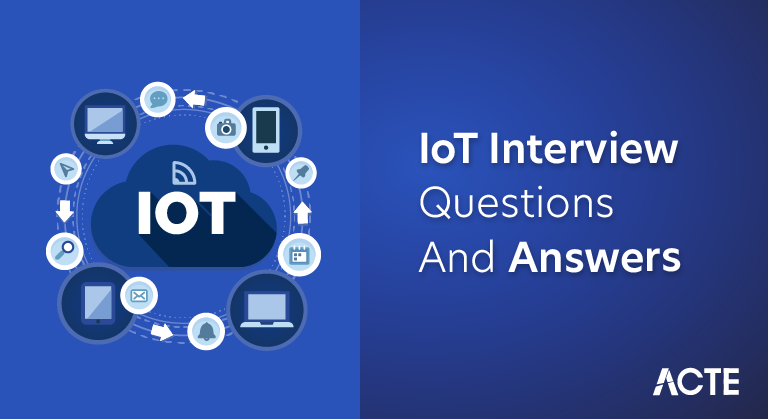
IoT, is a network of physical items or “things” that are integrated with sensors, software, and connectivity, enabling them to gather and share data with other devices and systems through the internet. These linked devices might be anything from commonplace items like home appliances and wearable tech to cars and industrial machinery.
1. What is IoT?
Ans:
IoT stands for “Internet of Things.” It describes a system of physically interconnected things and gadgets that have sensors, software, and other technologies built into them so they can gather and share data online.
2. Explain Raspberry Pi?
Ans:
Raspberry Pi is a single computer which is capable of doing all operations like conventional computer. The Raspberry Pi is the debit card-sized low-cost computer that connects to the computer Desktop or TV and uses standard mouse and Keyboard.
3. How does IoT contribute to industrial automation and the concept of Industry 4.0?
Ans:
IoT plays the pivotal role in industrial automation and concept of Industry 4.0 by connecting the machines, sensors, and systems to enable a real-time monitoring, predictive maintenance, and process optimization.
4. What are all fundamental components of IoT?
Ans:
Sensors/Devices: Sensors or devices are key component that helps to collect live data from surrounding environment. .
Connectivity: All collected data is sent to cloud infrastructure. The sensors should be connected to a cloud using various mediums of communications.
Data Processing: Once that data is collected, it gets to the cloud, software product performs a processing on the gathered data.
User Interface: The information require to be available to end-user in some way, which can be achieved by triggering an alarms on phones or sending them notification through an email or text message.
5. Distinguish between the IoT and IIoT?
Ans:
IoT:A full form of IoT is Internet of Things. A service model is a human-centric . It supports the customer-oriented applications . Communication transportation is done through a wireless devices .
IIoT:The full form of IIoT is Industrial Internet of Things. A service model is a machine-centric. It supports the industry-oriented applications. Communication transportation is done through both the wired and wireless devices.
6. List the layers of IoT protocol stack
Ans:
- Sensing and information,
- Network connectivity
- Information processing layer
- Application layer.
7. What are the disadvantages of IoT?
Ans:
Privacy: The use of IoT, exposes substantial amount of a personal data, in extreme detail, without user’s active participation. This creates the lots of privacy issues.
Complexity: The design of IoT system is also quite complicated. Moreover, it’s deployment and maintenance also not more easy.
Compliance: IoT has own set of rules and regulations. However, because of its complexity, task of compliance is quite challenging.
8. Define Arduino
Ans:
Arduino is free electronics platform having simple to use hardware and software. It has microcontroller capable of reading input from a sensors to control the motors programmatically.
9. What are the mostly used sensors types in an IoT?
Ans:
- Smoke sensor
- Temperature sensors
- Pressure sensor
- Motion detection sensors
- Gas sensor
10. How does the community assist in the development of IoT?
Ans:
Internet of Things relies greatly on network engagement for appropriate functioning of end-user goals. The cloud platforms enable an active network interactions between the several “smart devices” which in turn scale up a functionalities of numerous active gadgets with the IoT properties.
11. What are the advantages of IoT?
Ans:
- Technical Optimization
- Improved Data Collection
- Reduced Waste
- Improved Customer Engagement
12. Explain Bluegiga APX4 protocol
Ans:
The Bluegiga APX4 is the solution that supports both the WiFI and BLE platform, and it is based on 450MHz ARM9 processor.
13. What are the most common IoT applications?
Ans:
- Smart Thermostats
- Connected Cars
- Activity Trackers
- Smart Outlets
- Parking Sensors
14. Define Pulse Width Modulation
Ans:
PWM or Pulse Width Modulation is the variation of how much time the signal is high in analog fashion. The signal can be a high or low, and user can even change proportion of the time.
15. Mention the applications of a PWM in IoT
Ans:
Applications of a PWM in IoT are controlling a speed of DC motor, Controlling the direction of servo moto, Dimming LED, etc.
16. What are the available wireless communications boards available in Raspberry Pi?
Ans:
A Wireless communications boards are available in Raspberry Pi are:
- WiFi
- BLE/Bluetooth.
17. What are the functions used to read analog data from sensor in Arduino?
Ans:
analogRead(pin): This function is used to read analog data from sensors connected to analog pins. It takes one argument, which is the pin number (0 to 5 on most Arduino boards).
18. Explain the term Bluetooth Low Energy
Ans:
A Bluetooth Low Energy is wireless PAN (Personal Area Network) technology. It uses the less power to transmit long-distance over a short distance.
19. Define MicroPython
Ans:
MicroPython is the Python implementation, which includes the small subset of its standard library. It can be optimized to run on ModeMCU microcontroller.
20. List the available models in a Raspberry Pi
Ans:
- Raspberry Pi 1 Model B
- Raspberry Pi 1 Model B+
- Raspberry Pi 1 Model A
- Raspberry Pi Zero
- Raspberry Pi 3 Model B
- Raspberry Pi 1model A+
21. What are the challenges of IoT?
Ans:
- A Insufficient testing and updating
- Concern regarding a data security and privacy
- A Software complexity
- A Data volumes and interpretation
- Integration with AI and automation
22. Mention some of commonly used water sensors
Ans:
- Turbidity sensor
- Total organic carbon sensor
- pH sensor
- Conductivity sensor
23. Distinguish between the Arduino and Raspberry pi
Ans:
Arduino: Arduino is an open, a programmable USB microcontroller. It can execute a one program at a time.
Raspberry pi: Raspberry pi is the credit card size computer. Users can run more than a one program at a time
24. What are the most common used for IoT protocols?
Ans:
- XMPP
- AMQP
- Very Simple Control Protocol (VSCP)
- Data Distribution Service (DDS)
- MQTT protocol
25. Explain IoT publishers
Ans:
IoT Publishers are sensors that can send real-time data to an intermediate devices or middleware.
Ans:
Arduino library is the collection of code that is already written for a controlling module or sensor.
27. Mention some of wearable Arduino boards
Ans:
- Lilypad Arduino main board
- Lilypad Arduino simple
- Lilypad Arduino simple snap
- Lilypad Arduino USB
28. What is replication?
Ans:
Replication is an act of syncing a data between two or more servers. The technique of storing data across the multiple sites or nodes is known as data replication. It helps to increase the accessibility of a data.
29. What is IoT Thingworx?
Ans:
Thingworx is the platform for fast development and deployment of connected devices. It is the collection of integrated IoT development tools that support analysis, production, property, and alternative aspects of an IoT development.
30. What is the Salesforce IoT Cloud?
Ans:
The Salesforce IoT Cloud is online platform for storing and processing the IoT information.It is assortment of different application development elements, which are called lightning.
31. Explain IoT GE-PREDIX
Ans:
GE or General Electric Predix is the software for information assortment from industrial instruments. It offers the PaaS which allows users performance management and operation optimization facility. It connects to instrumentation, people, and information in exceedingly conventional technique.
32. What is MQTT?
Ans:
MQTT is a lightweight and efficient messaging protocol developed for low-bandwidth, high-latency, or unreliable networks like IoT (Internet of Things) and M2M (Machine-to-Machine) communication situations.
33. What are different types of CAN Frame?
Ans:
Various types of a CAN frames are:
- Data frame
- Request frame
- Error frame
- Overload frame.
34. What is the main difference between the floating CPU and fixed-point CPU?
Ans:
The main difference between a floating-point CPU and a fixed-point CPU lies in how they handle numerical representation and calculations. A floating-point CPU uses a representation that can handle a wide range of values with varying levels of precision, making it suitable for tasks involving complex mathematical operations where precision is critical, such as scientific calculations and graphics rendering.
35. Define GPIO
Ans:
GPIO means General Purpose Digital Input/Output. Like the DIO, it is programmable interface that lets a computer systems send command signals to IoT sensors. These IoT sensors are connect to GPIO through the GPIO pins where it requires the input and an output channel. GPIO is programmable pin that can be used to control input or output pins programmatically.
36. Explain Android things
Ans:
Android Things is the ‘managed Operating system ( OS)’ , developed for the IoT devices like a smart locks, smart thermostats & more. It could also run on products like the connected speakers, security cameras, routers, and so on. The idea is that, with the Android Things, it would be simpler for companies to start shipping IoT hardware, because using the same Android developer tools .
37. What is aim of airflow sensors?
Ans:
The main aim of airflow sensors is to measure the air level in soil. This sensor enables one to measure it dynamically, from one location, or the multiple locations of the garden.
38. Mention the suitable databases for IoT
Ans:
- influx DB
- Apache Cassandra
- RethinkDB
- MongoDB
- Sqlite
39. Why we use scheduler in RTOS?
Ans:
Scheduler in the RTOS is used for switching one task to the another. RTOS allows us to set the priorities for tasks, which allows scheduler to preempt lower priority tasks with the higher priority tasks. The operating system component known as the scheduler determines which tasks should be executed at each tick.
40. Mention real-time usage of Raspberry pi
Ans:
- Portable webserver
- Manipulating the robots
- Internet radio
41. Define IoT Contiki
Ans:
IoT Contiki is a software that targets explicitly little devices are connected with the Internet. It is used with the process power bandwidth, power, and restricted memory. Contiki helps for management of programs, resources, processes.
42. What is data in IoT?
Ans:
IoT data comes in a three different types, based on device generating it and the use case. Status data: Status data is a basic, raw data that communicates the status of the device or system. Automation data: This type of data is created by an automated devices and systems like smart thermostats and automated lighting.
43. In what ways IoT energy efficient?
Ans:
One of the major advantages of the IoT is that it makes a gadgets environment-friendly and substantially reduces the carbon emissions. By engaging in context-conscious automation, IoT gadgets are able to store energy. The IoT measures utlised energy by devices and quantify a energy that is used. This allows devices to eliminate energy wastage that reduces carbon footprint.
44. What are the economic impacts of increased application of IoT?
Ans:
IoT is known to positively impact economic standards of various industries. From facilitating a better resource management to the reducing response time and human interventions, IoTs can vastly reduce the labour costs and energy costs. This in turn can boost the supply chains of major industries, thus enabling product distribution at a cheaper costs. This not only helps to industries to earn greater profits but also is the great way to improve available production infrastructure
45. What are the components of an IoT ecosystem?
Ans:
- Devices or Sensors
- Connectivity
- Data Processing
- Cloud Services
- Analytics and Machine Learning
- Security
46. What is WSN?
Ans:
WSN stands for Wireless Sensor Network. It is collection for network of notes, design to observe and to study the physical parameters of the application.
47. What is Zigbee?
Ans:
Zigbee is a same like Bluetooth. Zigbee is the low-power wireless mesh network standard targeted at a battery-powered devices in the wireless control and monitoring the applications.
48. What is Z-Wave?
Ans:
Z-Wave is the IoT technology that uses a low power RF communication. It is designed for a home automation products are lamp controllers and also sensors.
49. How to install the new library in Arduino?
Ans:
A new library in the Arduino can be installed through selecting the library from a sketch option in Toolbar.The Arduino IDE, navigate to be Sketch > Include Library > Add .ZIP Library. At top of a drop down list, select option to “Add .ZIP Library”. And will be prompted to select library would like to add.
50. How does IoT contribute to the concept of “smart cities”?
Ans:
IoT significantly contributes to the concept of “smart cities” by enhancing urban infrastructure, services, and sustainability. Through IoT-connected sensors and devices, smart cities can monitor and optimize various aspects of urban life, such as traffic management, energy consumption, waste management, and public safety.
51. What are the major impacts of IoT in the Healthcare Industry?
Ans:
IoT has transformed the healthcare services and diagnostic practises to the large extent. From attaining a more precision in testing to making surgeries and implants prompt and efficient, IoT devices in healthcare industries have largely contributed towards for making medical practices much efficient, transparent and affordable. Besides, fitness parameters can be simply tracked these days with fitness bands and smartwatches.
52. What are the operating systems supported by Pi?
Ans:
- Raspbian
- RISC OS
- Lakka
- OSMC (Open Source Media Centre)
- Windows IoT Core
53. How to reduce the size of the sketch?
Ans:
Reducing the size of sketch is can be deduced by removing the unneeded libraries from code and made a code to short and easy.
54. What are the different types of antennas designed for IoT devices?
Ans:
- Chip Antenna
- PCB Antenna
- Wire Antenna
- Proprietary Antenna
- Whip Antenna
55. Distinguish between the M2M and IoT
Ans:
M2M: M2M offers the limited scalability options. A cellular network or wired network is used for a device connectivity. Machines can communicate with the one machine at a time.
IoT: IoT is an inherently more scalable. It uses active Internet connection for a device connectivity. Many machines can communicate with each other over an Internet
56. What are the features of influxDB?
Ans:
- Provides the support of visualization tools
- Works with the distributed time-series database
- It does not have an any external dependencies
57. How to program Arduino?
Ans:
Programmers can use Arduino IDE in order to write Arduino program. A Developers can used the Node.js Johny five-module for control the Arduino.
58. Name some of the IoT testing tools
Ans:
- Tcpdump
- Wireshark
- JTAG Dongle
- Digital Storage Oscilloscope
- Software Defined Radio
59. What is edge computing?
Ans:
Edge computing is especially valuable for IoT applications, where timely data analysis and decision-making are crucial, as it allows for efficient data handling and quicker responses to events.
60. What is the ZigBee protocol?
Ans:
ZigBee protocol provides cost-efficient, energy-efficient supporting wireless technology based on the IEEE 802.15.4 standards which is generally used for two ways communication between sensors and control systems. It is very similar to wifi or Bluetooth because its low range varies between 10 meters to 100 meters.
61. Name some of the IoT software
Ans:
- Blockchain
- Predix
- Microsoft Azure
- Bluemix
- Node-RED
62. Explain Shodan
Ans:
Shodan is IOT testing tool that can be used to discover which of devices are connected to an Internet. It allows to keep track of all computers which are directly accessible from an Internet.
63. Differentiate difference between Internet of Things and sensor businesses
Ans:
A sensor business may not require an active internet connection and can operate without one.
The Internet of Things does, however, have a control side that is needed to monitor and communicate information from sensors to the central unit inside an active network.
64. What are the challenges to the widespread use of IoT?
Ans:
There are few drawbacks to using IoT, despite the fact that its benefits are numerous and that the economy appears to be going quickly in that direction. The major risk associated with IoT usage is still security. This is due to the fact that system authentication control is weakened as a result of connecting various devices inside a cloud network.
65. Mention some examples of MEMS sensor
Ans:
- MPU6050- Gyroscope
- ADXL345
- Piezoelectric sensor
- Accelerometer
66. What IoT test approaches?
Ans:
- Usability
- IoT Security
- Connectivity
- Performance
- Compatibility Testing
67. Define sharding
Ans:
Sharding is the method to split data into the collections and stored in machines. Sharding is the type of database partitioning that separates the large databases into the smaller, faster, more easily managed parts. These smaller parts are called the data shards
68. List hardware prototypes used in IoT
Ans:
- Raspberry Pi
- ARM Cortex Family
- Arduino
69. Describe IoT Testing
Ans:
IoT testing is the type of testing to check IoT devices. There is demand to access, create, use, and share a data from any device. The thrust is to offer a greater insight and control over the different interconnected IoT devices. Hence, IoT testing framework is important.
70. What are the types of IoT?
Ans:
Internet of Things: It creates the business that uses gadgets to perform a task.
Industrial Internet of Things: It creates the business in an industry like agriculture.
71. Explain Thingful
Ans:
Thingful is the search engine for an Internet of Things. It permits the secure interoperability between the millions of an IoT objects by Internet. This IOT testing tool to control how a data is used and empowers to take more decisive and also valuable decisions.
72. What are interrupts in Arduino?
Ans:
Interrupts enable a specific tasks to process in background and are enabled by default. Its main job is to ensure device processor responds fastly to essential events.
73. What is Asset Tracking?
Ans:
An IoT asset tracking system can provide a real-time visibility into whereabouts of critical assets.An asset location solution can also generate a data that can be used to improve the asset utilization and optimize maintenance schedules.
74. List out the risks associated with the IOE.
Ans:
- Privacy
- Security
- Network congestion
- Electricity consumption at the peaks
75. What is basic difference between the IoT network and Wireless Sensor Network?
Ans:
A Wireless Sensor Network things are connected to a wireless network and gather a some monitoring environment or data. IoT contains a combination of WSN, Internet , Cloud Storage and web or mobile application.
76. What is the importance of a network in IoT?
Ans:
The network is main part of the IoT. It is a responsible for providing a practical and smart system that makes the strong infrastructure. The network provides scalability to help the devices coordinate with the other lines with Internet.
77. What is connection between the IoT and sensors in the commercial enterprise?
Ans:
Sensors may be used in the devices that are not net-connected, while devices are need to be connected to Net with IoT. Yet, sensing is the part of IoT, even if the device is not connected to Net.
78. Explain the types of testing in IoT
Ans:
- Usability Testing
- Compatibility Testing
- Reliability and Scalability Testing
- Data Integrity Testing
79. Which industries can benefit from an Internet of Things?
Ans:
The Internet of Things (IoT) has the potential to be beneficial to a variety of industries, including healthcare, agriculture, manufacturing, automotive, public transit, utilities and energy, environmental protection, smart cities, smart homes, and consumer electronics.
80. What is meant by a smart city in IoT?
Ans:
A smart city is the urban area that uses the IoT technologies to connect city services and enhance delivery.Using the sensor-driven data collection, smart city can orchestrate and automate the wide range of services, while reducing costs and making those services simpler to access for more people.
81. What is an embedded system on an IoT device?
Ans:
An embedded system is the combination of hardware, software and firmware that’s configured for specific purpose. It’s essentially for small computer that can be embedded in mechanical or electrical systems, like automobiles, industrial equipment, medical devices, smart speakers or a watches.
82. What are primary hardware components that make up an embedded system?
Ans:
- Sensor or other input device
- Analog-to-digital converter
- Processor
- Memory
- Digital-to-analog converter
- Actuator
83. What is sensor?
Ans:
A sensor is the physical object that detects and responds to the input from its surrounding environment, essentially reading environment for information.
84. What are GPIO pins in Raspberry Pi platforms?
Ans:
General-purpose I/O (GPIO) is the standard interface that Raspberry Pi and the other microcontrollers use to connect to an external electronic components. Recent Raspberry Pi models are configured with the 40 GPIO pins, which are used for a multiple purposes. For example, GPIO pins supply 3.3 volt or 5 volt direct current power, provide the ground for devices, serve as serial peripheral interface bus, act as universal asynchronous receiver/transmitter or deliver the other functionality.
85. What role does gateway play in IoT?
Ans:
An IoT gateway is the physical device or software program that facilitates a communications between IoT devices and network that carries device data to a centralized platform, like the public cloud, where data is processed and stored.
86. What are some of protocols used for IoT communication?
Ans:
- Bluetooth
- Bluetooth Low Energy (Bluetooth LE)
- Constrained Application Protocol
- Data Distribution Service
- Extensible Messaging and Presence Protocol
87. What are main differences between Bluetooth and Bluetooth LE?
Ans:
The use of Bluetooth, often known as Bluetooth Classic, varies from that of Bluetooth Low Energy. Although it uses a lot more power, Bluetooth Classic can handle a lot more data. Although Bluetooth LE uses less power, it cannot exchange nearly as much data.
88. How will IPv6 affect the Internet of Things?
Ans:
IPv6 is poised to revolutionize the Internet of Things (IoT) by addressing critical limitations of its predecessor, IPv4. With its vast address space, IPv6 provides a virtually inexhaustible supply of unique IP addresses, essential for accommodating the projected surge in IoT device numbers.
89. What is the Zigbee Alliance?
Ans:
The Zigbee Alliance is the group of organizations working together to create, evolve and promote to open standards for IoT platforms and devices. It’s developing global standards for a wireless device-to-device IoT communication and certifies products to help the ensure interoperability.
90. How can edge computing benefit IoT?
Ans:
Low Latency: Edge computing reduces the latency of data processing and decision-making.
Privacy and Security: Edge computing enhances data privacy and security.
Scalability: Edge computing distributes computational resources across a network of edge devices or servers.
91. How can 5G cellular networks impact IoT?
Ans:
Higher bandwidth and faster throughputs make it possible to support the more advanced use cases, especially those that need quicker response times, such as traffic control systems or an automated public transportation.
92. What are some of biggest security vulnerabilities that come with IoT?
Ans:
- Insecure network services
- Insecure ecosystem interfaces
- Lack of secure update mechanisms
- Use of insecure or outdated components
93. What steps can organization take to protect IoT systems and devices?
Ans:
- Incorporate security at design phase, with security enabled by default.
- Use application performance indicators to safeguard a data integrity.
- Ensure every device has unique identifier, and implement endpoint hardening, like making devices tamper-proof or tamper-evident.
- Use an advanced cryptographic algorithms to encrypt data in a transit and at rest.
94. What is meant by BLE (Bluetooth Low Energy)?
Ans:
BLE, also known as a Bluetooth Low Energy, is a form of Bluetooth that draws a less power and consumes less energy. Beginners could think of it this way. BLE, also known as a Bluetooth Smart, is a relatively new version of Bluetooth technology that uses much less power and is far more cost-effective than a traditional Bluetooth yet providing an equivalently of large communication range.
95. Describe thermocouple sensor
Ans:
A thermocouple can track temperature changes by using the connection between the two metals. The temperature reading is obtained through the connection between the two pieces of metal at one end. The low voltage generated by the metal conductors can be utilized to determine the temperature.
96. What are the various IoT protocol stack layers?
Ans:
- Application Layer
- Middleware Layer
- Transport Layer
- Network Layer
- Data Link Layer
- Physical Layer
- Device Layer
97. How is MQTT used in IoT communication?
Ans:
MQTT is employed in IoT communication through its publish-subscribe model. IoT devices publish data to specific topics, and other devices or applications subscribe to those topics to receive data updates. This efficient, lightweight protocol is ideal for IoT scenarios, ensuring reliable and low-overhead data exchange in various IoT deployments.
98. How do you ensure the scalability and reliability of an IoT solution?
Ans:
This includes using scalable cloud infrastructure, load balancing, and optimizing data transmission. Reliability is ensured through redundancy, failover mechanisms, data validation, and robust error handling.
99. How do you address power management and energy efficiency in IoT device design?
Ans:
This can be achieved through several strategies, such as using low-power components, optimizing sleep modes, and implementing efficient power management algorithms.
100. How is IoT used in industrial automation?
Ans:
IoT makes it possible to remotely monitor and manage industrial processes and equipment. Real-time data on machine performance, temperature, pressure, and other factors is gathered by sensors and linked equipment.


